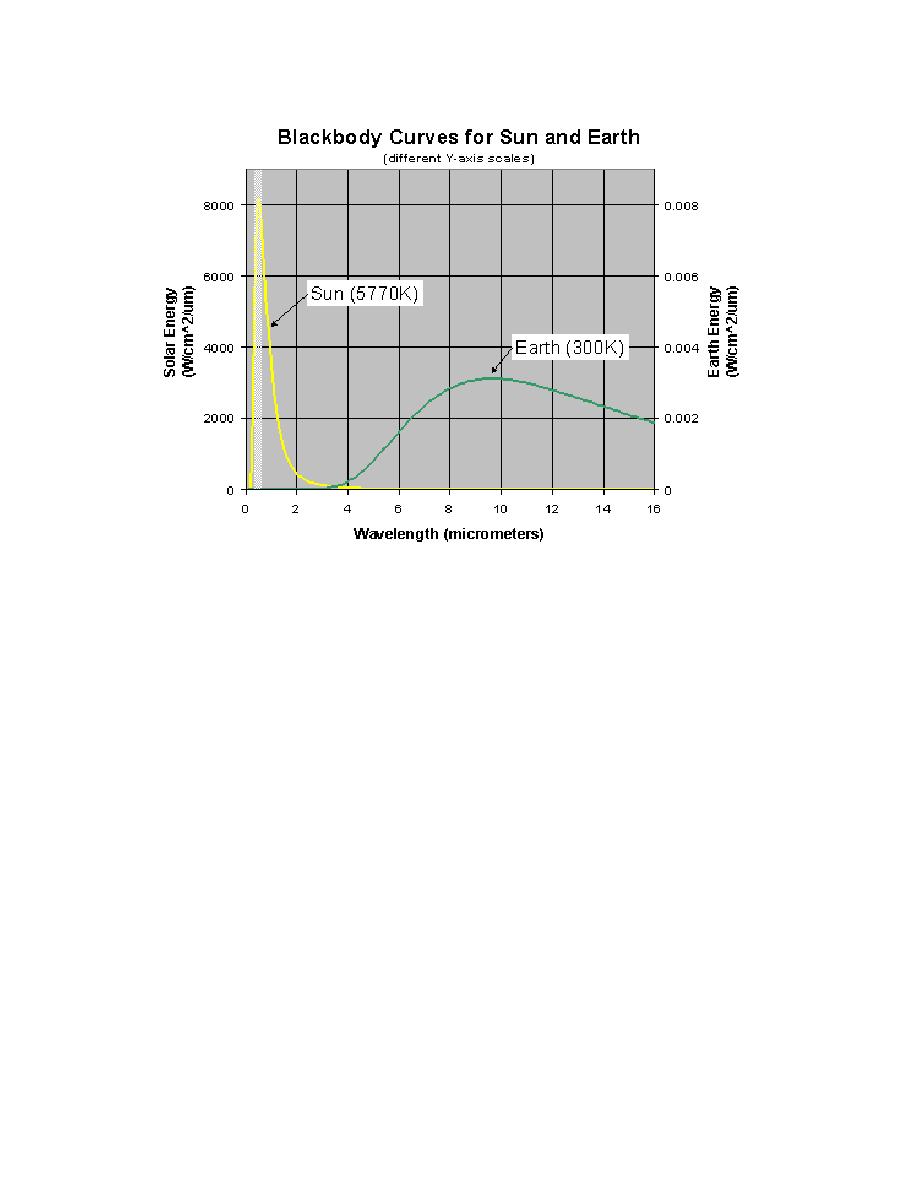
EM 1110-2-2907
1 October 2003
Figure 2-11. The Sun and Earth both emit electromagnetic radiation. The Sun's
temperature is approximately 5770 Kelvin, the Earth's temperature is centered on
300 Kelvin.
l. Passive and Active Sources. The energy referred to above is classified as passive
energy. Passive energy is emitted directly from a natural source. The Sun, rocks, ocean,
and humans are all examples of passive sources. Remote sensing instruments are capable
of collecting energy from both passive and active sources (Figure 2-1; path B). Active
energy is energy generated and transmitted from the sensor itself. A familiar example of
an active source is a camera with a flash. In this example visible light is emitted from a
flash to illuminate an object. The reflected light from the object being photographed will
return to the camera where it is recorded onto film. Similarly, active radar sensors trans-
mit their own microwave energy to the surface terrain; the strength of energy returned to
the sensor is recorded as representing the surface interaction. The Earth and Sun are the
most common sources of energy used in remote sensing.
2-5 Component 2: Interaction of Electromagnetic Energy With Particles in
the Atmosphere.
some distance through the Earth's atmosphere from the source to the sensor. Radiation
from the Sun or an active sensor will initially travel through the atmosphere, strike the
ground target, and pass through the atmosphere a second time before it reaches a sensor
2-14





 Previous Page
Previous Page
